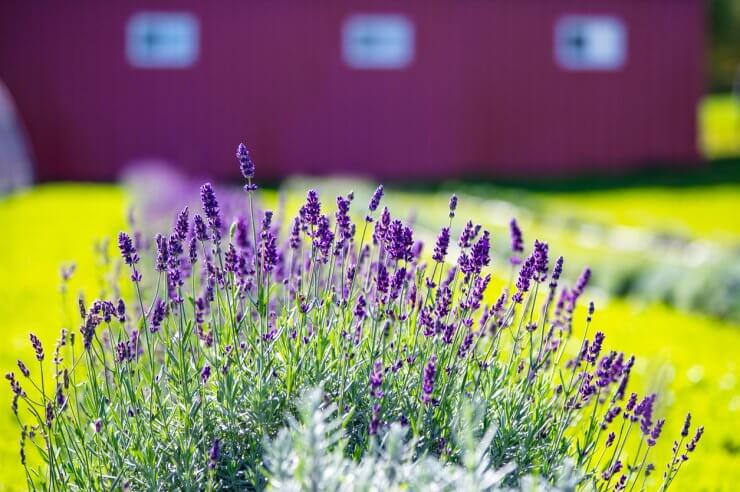
Lavender growing in front of a barn
Lavender has been dubbed the Queen of Herbs, and for good reason. Lavender is beautiful; it smells divine; and it has a wide variety of culinary uses. It’s also effective as an insect repellent, and has been used to treat acne, earaches, aching muscles, depression, anxiety, eczema and psoriasis, tension headaches, and even sunburns.
Lavender also works well as a garden border; some taller varieties can serve as a living hedge. This semi-evergreen perennial seems to do it all—and do it in brilliant, fragrant, beautiful style. On top of that, it’s cold-hardy, too. Now, if you live beyond USDA Plant Hardiness Zones 8 or 9, don’t worry—you can grow lavender as an annual.
Now, when it comes to using lavender in the kitchen, not all lavenders are the same. There are more than 45 species of lavender with more than 450 varieties! But for our food gardening purposes, we’re going to stick with the lavenders that not only smell good, but taste good, too.
Lavender is in the genus Lavandula; it’s part of the mint family. The stems are square rather than circular, a common characteristic of aromatic herbs.
Within the Lavandula genus, there are generally four main types of lavender:
- English (Lavandula angustifolia)
- Lavandin aka French lavender (Lavandula x intermedia)
- Spanish (Lavandula stoeches)
- Fringed (Lavandula dentata)
Of these, the main culinary lavender is English lavender, prized for the flavor of its flowers and leaves and for its fragrant oil. Lavandin, or French lavender, is ironically not the main lavender grown in the flowing fields in the French region of Provence; English lavender dominates because of the quality of its oil. French lavender oil has a strong camphor/menthol smell which is not particularly appealing to the palate. The exception is Provence lavender, which is used to make the French classic herbes de Provence—a special blend of herbs used in French cuisine.
Some chefs will argue the merits of Provence lavender over any English lavender; and that was true some years ago. But since then, English lavender really seems to have taken over the culinary lavender scene. Even so, if you ask 10 chefs what the best lavender is to use in cooking and baking, it’s likely you’ll get at least 10 different answers.
One good way to determine if a particular lavender will be good for your cooking uses is to taste a flower bud. If it tastes good to you, it will likely taste good in your recipe. But always recite the lavender mantra before you begin seasoning: A little lavender goes a long way. Always err on the side of caution; better to add too little than too much. If you overdo it, your dish might taste bitter or like soap.
Lavender flowers come in a range of colors from white to pink to blue to purple. You have plenty of color choices. Culinary lavender plants range in size from under a foot tall to 3 feet tall. So which is best for your garden? Here’s a sampling of some of the types of lavender common among home food gardeners:
Low-growing lavender: These plants grow to be just under a foot tall up to 2 feet tall.
Mid/late spring to early/midsummer:
- Hidcote
- Lavenite Petite
- Little Lottie
- Munstead
Early to midsummer:
- Thumbelina Leigh
Midsummer to late summer:
- Melissa Lilac (don’t let the name fool you; it refers to the color of the flowers)
- Nana Alba
Nana Alba and Thumbelina Leigh may top off at less than a foot tall.
Medium height lavender: These plants grow to be 2 to 3 feet tall.
Mid/late spring to early summer:
- Folgate
Late spring to early/midsummer:
- Miss Katherine
- Rosea
- Royal Velvet
Early to midsummer
- Royal Purple
Midsummer to late summer:
- Betty’s Blue
- Provence
Provence is the sole Lavandin on the culinary list; the rest are English lavenders.
You can grow your lavender from seed (challenging, but not impossible), or get recommendations from your local nursery or extension center about the best lavender for your needs. If you buy plants, be sure they have not been treated with pesticides; you want food-grade lavender.
Which type of lavender have you grown? Do you have a preference? Please share your opinion.


 Previous
Previous

